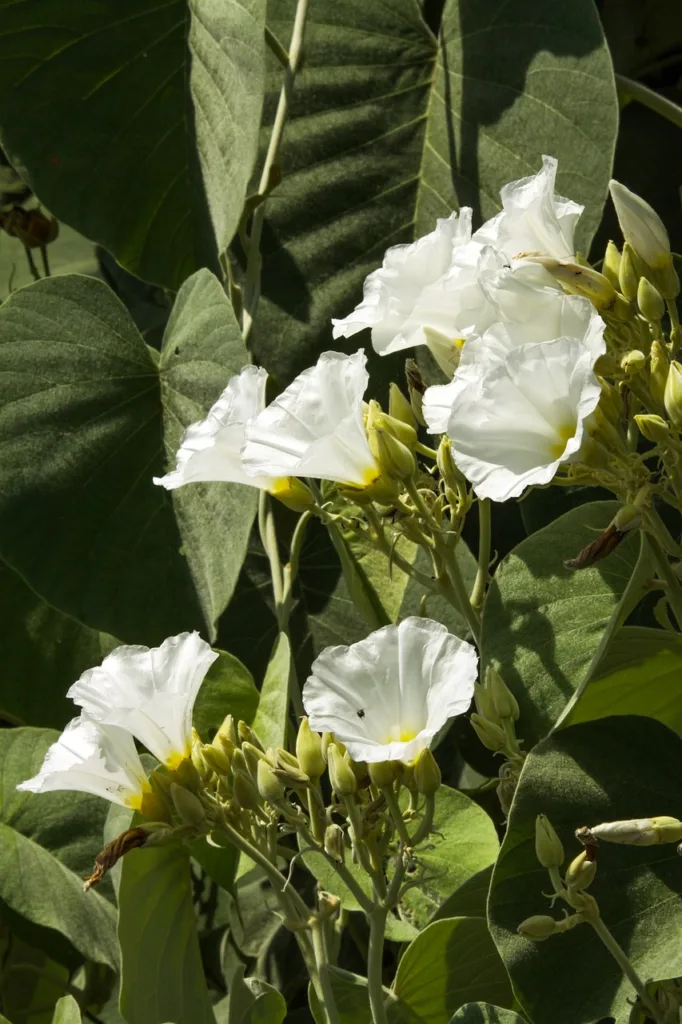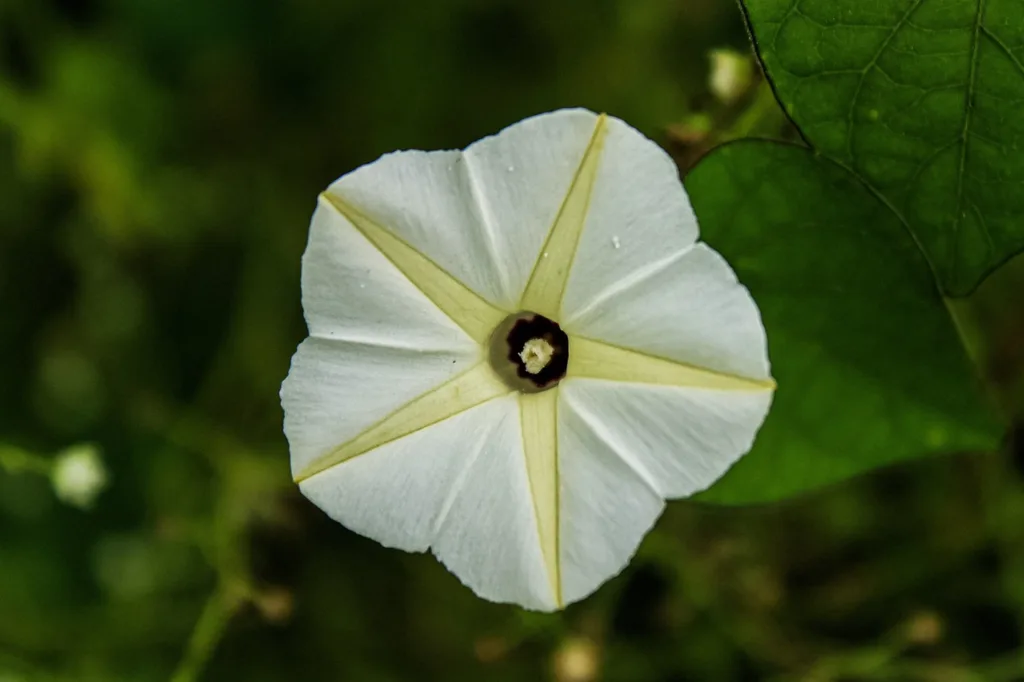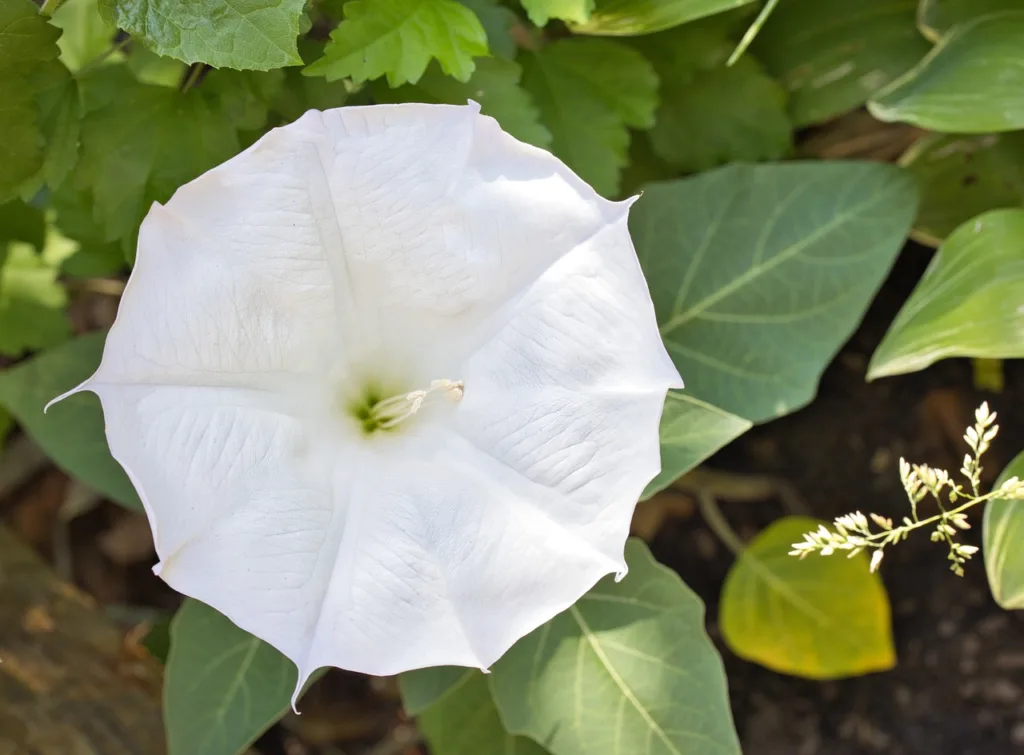Welcome, plant lovers! Have you ever gazed at the beauty of a moonflower? With its delicate, fragrant blossoms that only open at night, the moonflower is an enchanting addition to any garden.
Moonflower, scientifically known as Ipomoea alba, is a night-blooming species of morning glory, a climbing vine that is recognized for its large, fragrant, white flowers that bloom at dusk and dawn.
Till closes. The flowers often reach sizes up to six inches in diameter, with a sweet scent that attracts nocturnal pollinators such as moths, thus giving it the name “moonflower”.
This ornamental plant is native to North and South America and belongs to the Convolvulaceae family.
In this blog post, we will explore the secrets to successfully growing and caring for moonflowers. Whether you are a beginner or an experienced gardener, this guide will provide you with all the information you need to cultivate these captivating flowers.
| Attribute | Description |
|---|---|
| Scientific Name | Ipomoea alba |
| Common Names | Moonflower, Moon Vine, Tropical White Morning-glory |
| Plant Type | Vine |
| Native To | Americas, native to the tropical and subtropical regions |
| Bloom Season | Late spring to early fall, blooming in the evening |
| Flower Color | White, fragrant flowers that bloom at night |
| Growing Conditions | Full sun, well-draining soil, regular watering |
| Special Features | Fast-growing, attracts night pollinators like moths |
| Toxicity | Poisonous, especially seeds |
Choosing the Right Location
Before you start planting your moonflowers, it’s important to choose the right location for them to thrive. Moonflowers are tropical vines that require full sunlight to grow and bloom to their fullest potential. Ensure that your chosen spot receives at least 6 hours of direct sunlight each day.
In addition to sunlight, moonflowers also need a sturdy support structure to climb on, such as a trellis, fence, or pergola.
Preparing the Soil
Moonflowers prefer well-drained soil that is rich in organic matter. Before planting, prepare the soil by loosening it with a garden fork or tiller.
Remove any weeds or debris and incorporate organic compost or aged manure to improve the soil’s fertility. This will provide the moonflowers with the nutrients they need to thrive.
Planting Moonflower Seeds
Moonflowers can be grown from seeds, but they require some special care. Start by soaking the seeds in warm water for 24 hours before planting.
This will help to soften the hard seed coat and improve germination. After soaking, plant the seeds about 1 inch deep in the prepared soil, spacing them about 6 to 12 inches apart.
Water the seeds gently but thoroughly, ensuring that the soil remains moist until the seeds germinate.

Watering and Fertilizing
Proper watering is essential for the healthy growth of moonflowers. Keep the soil evenly moist, but avoid overwatering as this can lead to root rot.
Water deeply once a week, providing about 1 inch of water each time. During hot, dry periods, you may need to increase the frequency of watering.
To promote vigorous growth and abundant blooms, fertilize your moonflowers regularly. Use a balanced, water-soluble fertilizer formulated for flowering plants.
Follow the instructions on the fertilizer packaging for the appropriate dosage and application frequency. Be cautious not to over-fertilize, as this can result in excessive foliage growth at the expense of flowers.

- Overwatering: Excessive watering can lead to root rot, causing damage to the plant’s roots and stunting growth.
- Poor Soil Conditions: Moonflowers grow best in well-draining soil. Compacted or poorly draining soil can hinder their development.
- Inadequate Sunlight: Lack of sufficient sunlight can affect flowering or overall growth, as these plants generally require full sun exposure.
Dealing with Pests and Diseases
Moonflowers are generally resistant to pests and diseases, making them a low-maintenance option for gardeners.
However, they may occasionally fall prey to common garden pests such as aphids, spider mites, or snails. To control these pests, regularly inspect your plants for any signs of infestation.
Remove any affected leaves or pests by hand or use organic insecticides as necessary.
Powdery mildew can be a problem for moonflowers, especially in humid conditions. To prevent this fungal disease, ensure good air circulation around the plants by avoiding overcrowding.
Water the plants in the morning, allowing the foliage to dry before evening. If powdery mildew does appear, treat it with a fungicide suitable for ornamental plants.
| There are different plants that use the common name “moonflower,” although the primary Ipomoea alba species is typically sold without a variety designation. Some plants that share this name include: Ipomoea leptophylla: It’s commonly referred to as the bush moonflower or bush morning glory. This species is an upright, flowering plant. Ipomoea violacea: Also known as the beach moonflower or sea moonflower, this plant produces white flowers that open at night. |
Pruning and Maintenance
Moonflowers are vigorous climbers that can quickly take over your garden if left unattended. To control their growth and maintain a neat appearance, regular pruning is necessary.
Prune the vines in early spring to remove any dead or damaged branches. Throughout the growing season, trim back excessive growth to encourage branching and stimulate more blooms.
The Magic of Moonlit Blooms
One of the most enchanting aspects of moonflowers is their blossoms that open at night, filling the air with a delightful fragrance.
To fully experience the magic of these nocturnal flowers, plan a moonlit garden stroll. As the sun sets and darkness falls, watch as the moonflowers slowly unfurl their petals, revealing their luminous white or pale yellow hues.
Breathe in their sweet fragrance and listen to the gentle buzz of nighttime pollinators. It’s a truly captivating sight that reminds us of nature’s wondrous beauty.
Conclusion
Growing and caring for moonflowers is a rewarding experience that offers an opportunity to connect with nature’s wonders.
By selecting the right location, preparing the soil, and providing proper care, you can enjoy the beauty of these night-blooming flowers in your own garden.
Remember to water and fertilize regularly, protect your plants from pests and diseases, and prune to maintain their growth. Embrace the magic of moonlit blooms and create a garden that enchants both you and your visitors. Happy gardening!
People also ask
What is so special about a moonflower?
Moonflowers are particularly unique for their distinct large, white, fragrant blossoms that bloom at night, emitting a captivating fragrance and enticing pollinators such as moths.
Their beauty, coupled with their nocturnal blooming, makes them distinctive and captivating garden plants.
What is the moonflower in India?
The moonflower, known as “Brahma Kamala” or “Brahmakamala,” holds a special place in Indian mythology and is considered sacred. It’s a plant species distinct from the classic moonflower vine (Ipomoea alba).
The Brahma Kamala is believed to be associated with divine significance in Hindu culture and mythology, primarily for its auspiciousness and ethereal beauty. The flower is believed to bloom at night, releasing a sweet fragrance and bearing spiritual and religious connotations.
Why do moon flowers bloom at night?
Moonflowers are a type of flowering plant whose blooms unfold in the evening and night, typically after sunset.
This behavior is related to their pollination strategy. Moonflowers often attract night-flying pollinators such as moths and other insects that are active during the evening hours.
By blooming at night and exuding a strong, sweet fragrance, moonflowers entice these nocturnal pollinators. The flowers usually close as the sun rises in the morning.
What does the moonflower symbolize?
- Serenity and Beauty: The pure white blossoms often represent serenity, purity, and beauty due to their striking appearance and ability to brighten gardens at night.
- Secrets and Mysteriousness: Their nocturnal blooming and ability to unveil their beauty in darkness are sometimes associated with the concept of mysteries, secrets, and hidden beauty.
- Transience: The bloom cycle, which opens at night and withers by morning, can symbolize the fleeting nature of life and beauty.
- Romanticism and Dreaminess: Moonflowers are linked to romantic feelings and are considered dreamy and exotic because of their evening blooms and enchanting fragrances.

